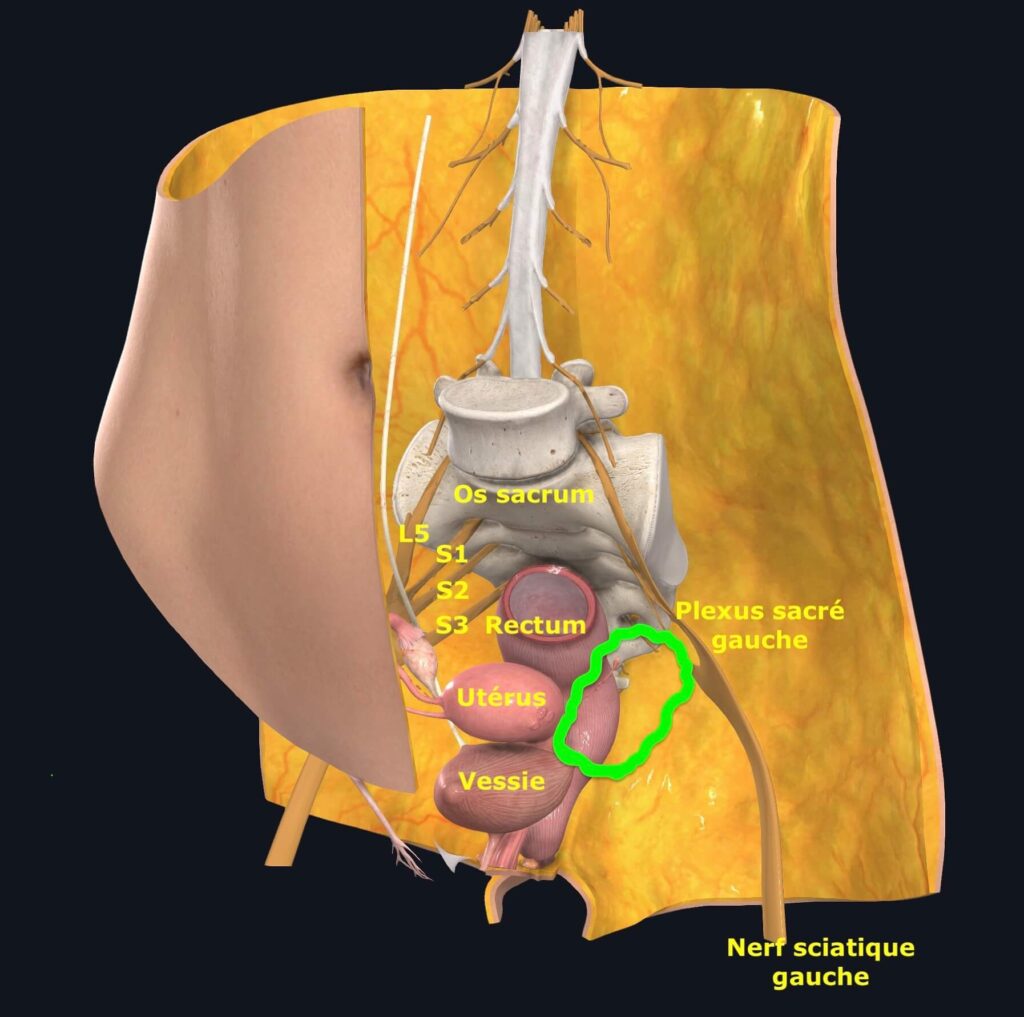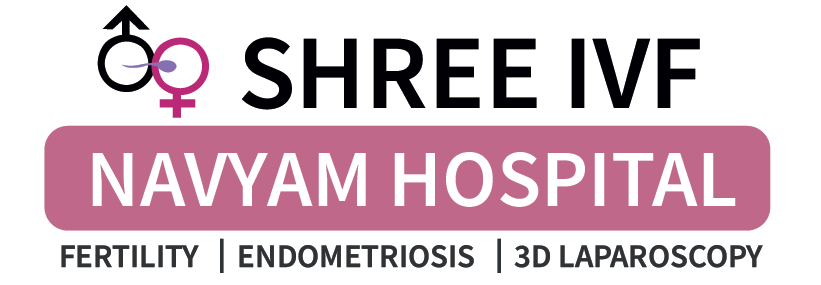
Endometriosis is a condition where tissue resembling the uterine lining begins to grow outside the uterus, leading to various symptoms and complications.
A rare but particularly severe form of this condition is sciatic nerve endometriosis, which can cause debilitating pain and neurological issues.
This article explores the nature of sciatic endometriosis, focusing on its complex symptoms, treatment approaches, and the recovery process.
🌿 Sciatic Endometriosis: Symptoms, Diagnosis, and Treatment
✅ What is Sciatic Endometriosis?
Sciatic endometriosis is a rare form of endometriosis where endometrial-like tissue grows near or around the sciatic nerve, the largest nerve in the body.
This condition can cause severe pelvic pain, lower back pain, and sciatica-like symptoms, often mimicking common nerve-related issues.
It typically affects women of reproductive age and can lead to chronic pain, nerve damage, and mobility issues if left untreated.
Although rare, sciatic endometriosis is difficult to diagnose due to its overlap with other neurological and musculoskeletal conditions.
🔎 Causes and Risk Factors
The exact cause of sciatic endometriosis is not fully understood, but several factors may contribute to its development:
✅ 1. Retrograde Menstruation:
- When menstrual blood flows backward into the pelvic cavity, endometrial cells may implant near the sciatic nerve.
✅ 2. Direct Infiltration:
- Endometriotic lesions may grow and invade the tissue around the sciatic nerve.
✅ 3. Hematogenous or Lymphatic Spread:
- Endometrial tissue may spread through the blood or lymphatic system, reaching the sciatic region.
✅ 4. Prior Surgeries or Pelvic Scarring:
- Previous pelvic surgeries or cesarean sections may increase the risk of endometrial cell displacement near the sciatic nerve.
✅ 5. Hormonal Factors:
- Estrogen dependency may stimulate the growth of endometriotic lesions around the sciatic nerve.
🔥 Symptoms of Sciatic Endometriosis
Sciatic endometriosis can cause neurological, pelvic, and musculoskeletal symptoms, which often worsen during menstruation.
Common symptoms include:
✅ 1. Sciatic Nerve Pain:
- Sharp or burning pain radiating from the lower back, through the buttock, and down the leg.
- Pain may intensify before and during menstruation.
✅ 2. Lower Back and Hip Pain:
- Chronic or intermittent lower back pain.
- Hip pain on one or both sides, making walking difficult.
✅ 3. Leg Weakness or Numbness:
- Tingling, numbness, or weakness in the leg or foot.
- Symptoms may mimic sciatica or nerve compression.
✅ 4. Pain During Intercourse (Dyspareunia):
- Deep pelvic pain during or after sexual intercourse.
✅ 5. Menstrual Irregularities:
- Heavy, painful periods (dysmenorrhea).
- Symptoms often worsen around the menstrual cycle.
✅ 6. Bowel or Bladder Issues:
- Constipation, painful urination, or difficulty emptying the bladder.
- May indicate nerve involvement affecting pelvic organs.
✅ 7. Difficulty Walking or Sitting:
- Severe cases may cause gait abnormalities or limping.
- Prolonged sitting or walking can aggravate pain.
🔍 Diagnosis of Sciatic Endometriosis
Diagnosing sciatic endometriosis is complex due to its similarity to neurological and musculoskeletal disorders.
A combination of clinical evaluation, imaging, and sometimes surgery is required.
✅ 1. Medical History and Physical Examination:
- Review of pain patterns, menstrual history, and neurological symptoms.
- Pelvic examination to detect tenderness.
- Neurological tests to assess sciatic nerve involvement.
✅ 2. Magnetic Resonance Imaging (MRI):
- Gold standard for diagnosing sciatic endometriosis.
- Reveals endometriotic lesions, nerve compression, or pelvic inflammation.
- Identifies scar tissue or adhesions around the sciatic nerve.
✅ 3. Pelvic and Sciatic Nerve Ultrasound:
- Helps detect deep endometriosis and nerve compression.
- Identifies pelvic adhesions or fluid accumulation.
✅ 4. Electromyography (EMG):
- Measures the electrical activity of muscles controlled by the sciatic nerve.
- Identifies nerve dysfunction or damage.
✅ 5. Laparoscopy:
- Definitive diagnostic tool for confirming sciatic endometriosis.
- Allows direct visualization and biopsy of lesions.
- Helps assess the severity of nerve involvement.
✅ 6. Neurological Assessment:
- Reflex tests, strength evaluation, and sensory examination.
- Determines the extent of nerve impairment.
💊 Treatment Options for Sciatic Endometriosis
Treatment for sciatic endometriosis focuses on:
- Pain relief.
- Reducing lesion growth.
- Preserving nerve function.
- Improving quality of life.
✅ 1. Medical Management:
- Hormonal Therapy:
- GnRH agonists (leuprolide, goserelin) to reduce estrogen production.
- Progestins (dienogest, norethindrone) to suppress endometrial growth.
- Combined oral contraceptives (COCs) to regulate hormone levels.
- Pain Management:
- NSAIDs (ibuprofen, naproxen) for pain relief.
- Neuropathic pain medications (gabapentin, pregabalin) to manage nerve pain.
- Physiotherapy and Rehabilitation:
- Physical therapy to improve mobility and reduce nerve pain.
- Stretching and strengthening exercises for lower back and hip muscles.
✅ 2. Minimally Invasive Surgery:
- Laparoscopic Surgery:
- Gold standard for removing endometriotic lesions.
- Relieves nerve compression and improves mobility.
- Neurolysis:
- Surgical procedure to free the sciatic nerve from adhesions.
- Reduces nerve entrapment and pain.
- Nerve Decompression Surgery:
- Performed in severe cases to relieve nerve pressure.
- Restores normal nerve function.
✅ 3. Lifestyle and Dietary Modifications:
- Anti-inflammatory diet (rich in omega-3s and antioxidants).
- Regular low-impact exercises (swimming, yoga) to reduce inflammation.
- Heat therapy or warm baths to alleviate muscle stiffness.
✅ 4. Fertility Preservation:
- Women with fertility concerns may consider oocyte or embryo freezing before surgery.
⚠️ Complications of Sciatic Endometriosis
If left untreated, sciatic endometriosis can lead to:
❗ Chronic Pain:
- Persistent, debilitating pain affecting daily activities.
❗ Nerve Damage:
- Permanent nerve injury if the condition progresses.
- Can cause leg weakness, numbness, or loss of function.
❗ Mobility Issues:
- Severe cases may lead to difficulty walking or limping.
❗ Reduced Quality of Life:
- Chronic pain and mobility issues can significantly affect physical and emotional well-being.
💡 Key Takeaway
Sciatic endometriosis is a rare but debilitating condition where endometrial tissue affects the sciatic nerve, causing severe pain and neurological symptoms.
Early diagnosis through MRI and laparoscopy is essential for effective treatment.
A combination of hormonal therapy, surgery, and pain management offers the best chance of symptom relief and preserving nerve function. 🌿


